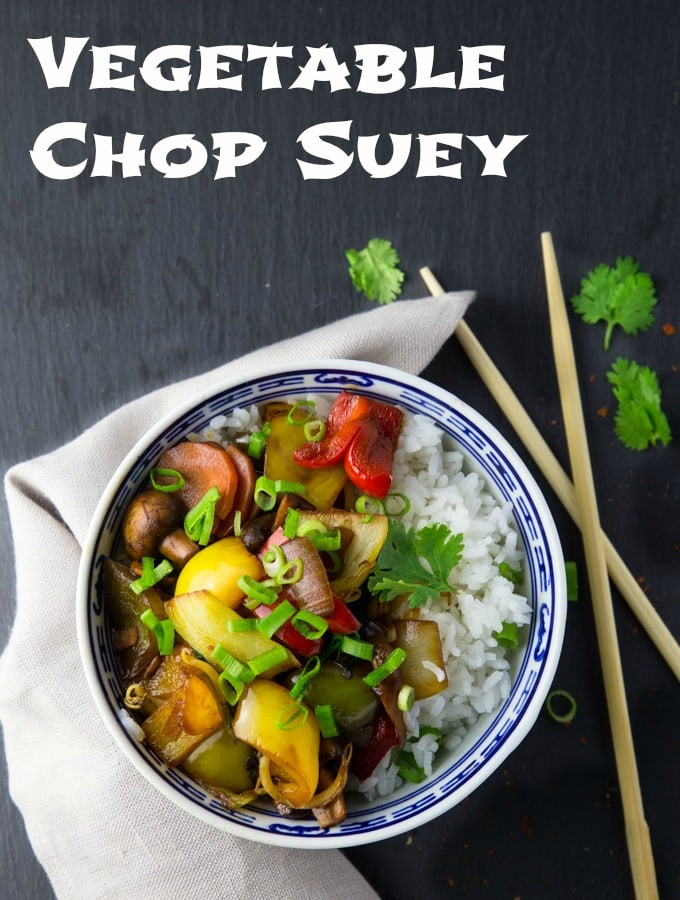

It seems that I always have too much celery, because I have to buy it by the bag rather than by the stalk. If anyone disagrees with me though, I'd love to hear your point of view as well. It's a dish that represents Chinese cuisine well I think. So I doubt that chop suey was created to insult customers. I rarely see a Chinese dish that isn't a combination of vegetable and meat. From what I've learned from her cooking, Chinese cuisine generally entails combining different kinds of ingredients together. I'm no expert on Chinese food but I have a Chinese roommate who cooks every day. What is chop suey meaning? What does each word mean in English? It is an Americanized Chinese dish and it was one of the first Chinese foods that became popular among Americans who started dining in Chinese populated areas in cities. Whether the dish was made up by an American or a Chinese, it was certainly made for the American palate. There is no such thing as chop suey in China. But one thing is for sure- it's American. There are different stories about how chop suey originated. Over-crowding your pan while cooking will result in steaming versus frying or sauteing and will make them soggy.November 28, Chop suey means "in pieces." Make sure that the size of your wok or skillet is big enough to accommodate all the ingredients. This process will preserve the vibrancy, flavor, and nutrients of these. Another good tip that you can use is to parboil (to drop your vegetables in boiling water for a minute) then blanch (submerge them in ice-cold water) them. It's best to always cook the ones that take longer to soften then add the ones that cook quicker later. So make sure to be mindful of the cooking time. Foxy Tips for a Vibrant and Delicious Chop Sueyĭo not overcook your veggies! This is a big no-no when making this dish, you want vibrant and tender-crisp, not soggy and gray vegetables. Other Options- as if having a counter-full of veggies, meat and seafood are not enough, some also like adding hard-boiled quail eggs, and fried firm tofu. Seafood Options- If you opt to add seafood on the already flavorful mix of your Chop Suey, the best options would be shrimps, prawns, scallops, squid, and mussels.

The ones made here in the Philippines usually include pork or chicken liver, chicken heart, and gizzard. Pork, beef, and chicken being the most favored ones.

Meat Options- there are also several meat options that you can choose from. On this recipe, I also used Pak Choi and Sugar snaps freshly picked from my backyard garden. Vegetable Options- You can use leftover vegetables on your fridge that needs to be cooked soon or harvest them fresh from your own veggie garden! The most common vegetables used for this dish are cabbage, carrots, onions, celery, bell pepper, cauliflower, broccoli, garlic, young corn, mushrooms, beans, bamboo shoots, and bean sprouts. It is mostly described as a "stir-fry of vegetables, meat, and seafood that comes with a thick sauce." This is the reason why Chop Suey has no exact formal definition. You can choose whatever you want or omit the ones you do not like. The good thing about cooking Chop Suey is that you can use as many varieties of vegetables, meat, seafood, and other additions as you like. The one I made, of course, is the Filipino way of making this mouth-watering dish that we eat with steamed with rice. But I have always known this dish to be paired with rice. Some historians claimed that this dish is originally noodle-based kind of like Chow Mein. This dish was somewhat made haphazardly by mixing whatever available ingredients or leftovers were at that time and tossing it into a thick sauce- then viola! - Chop suey was invented! Nevertheless, I saw a common trend in those stories. Foxy Tips for a Vibrant and Delicious Chop SueyĪs I was doing my research on this recipe, I was surprised to learn that the exact origin of this famous dish is still unknown! Yes, we know that it is an American-Chinese cuisine but there were so many accounts of how, when, and who started this dish that until now, are still left unproven.


 0 kommentar(er)
0 kommentar(er)
